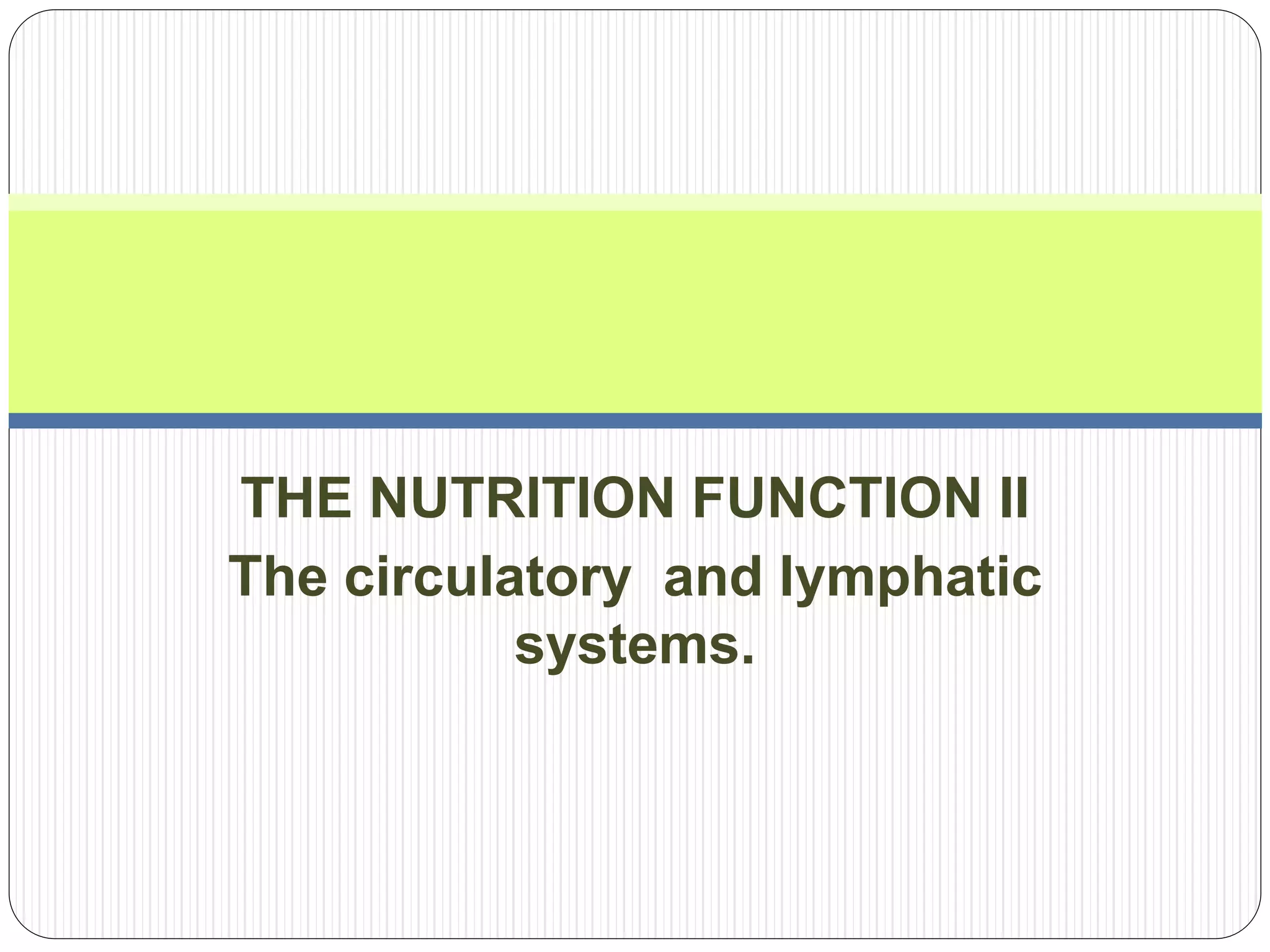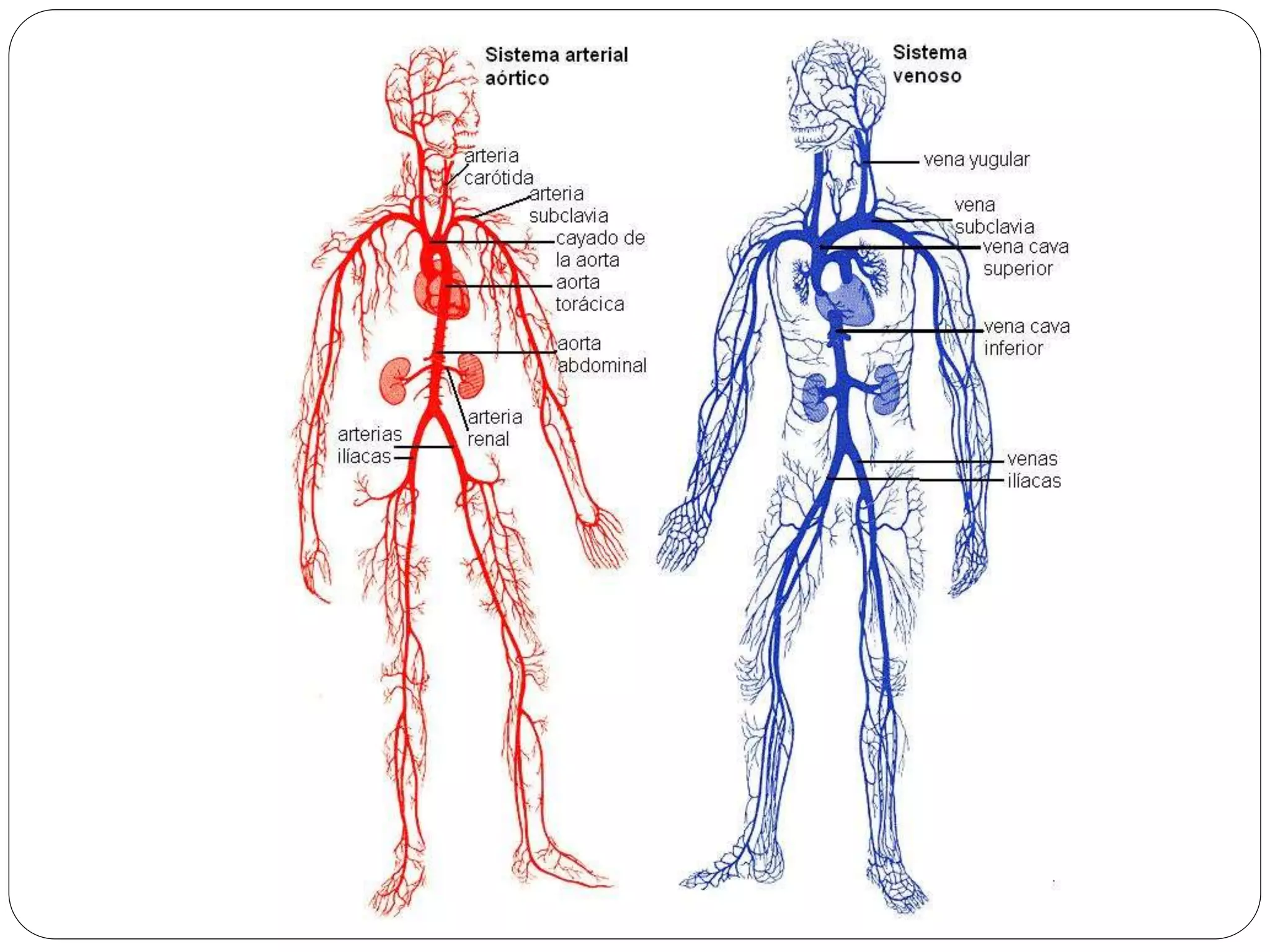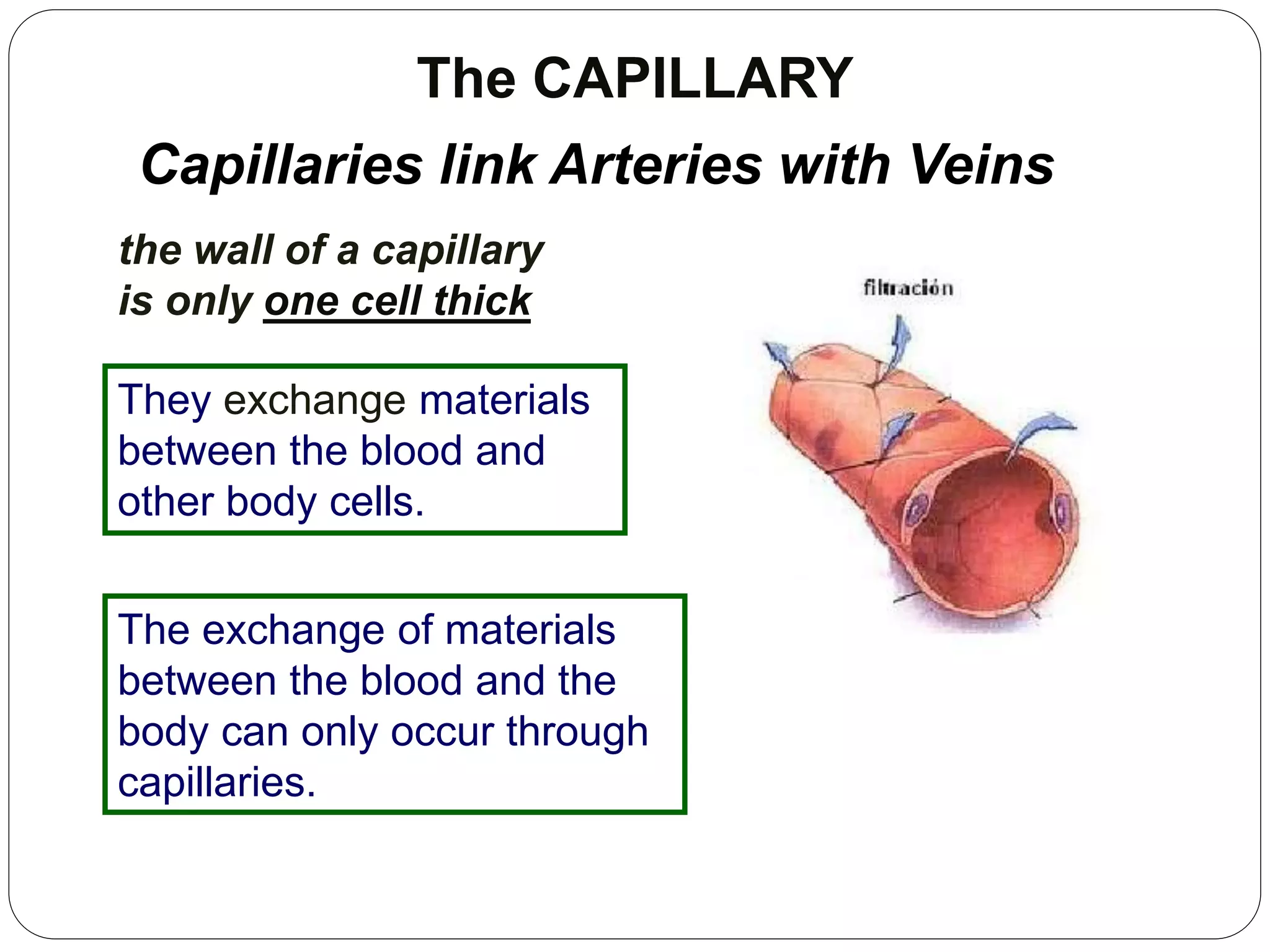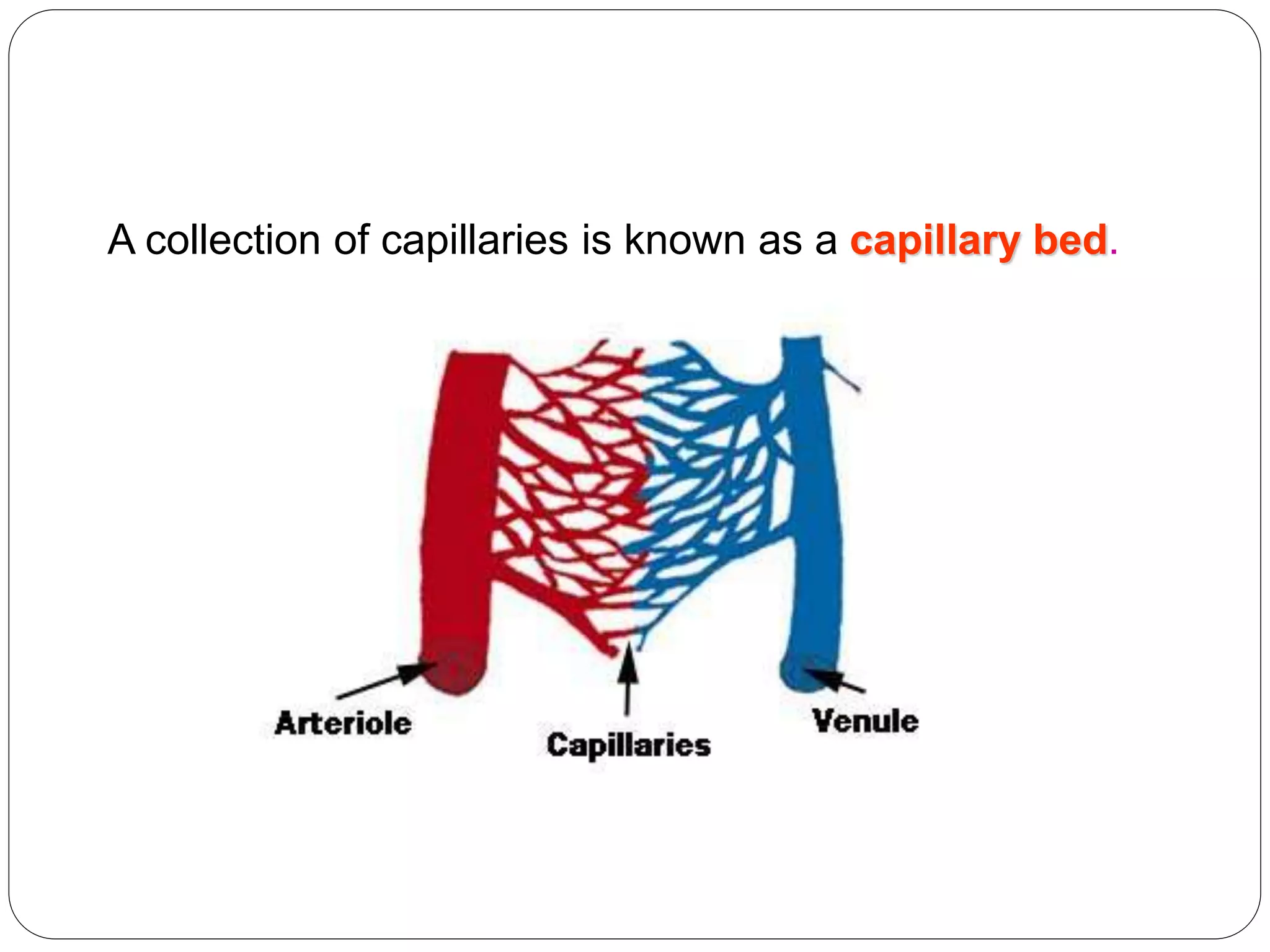The circulatory and lymphatic systems work together to transport nutrients, oxygen, hormones, carbon dioxide, and waste throughout the body. The circulatory system is composed of the heart, arteries, veins, and capillaries. Blood is pumped from the heart through arteries and returns via veins. Gases and molecules are exchanged between blood in capillaries and tissues. The lymphatic system drains excess fluid from tissues, transports it via lymph vessels, and returns it to the blood. Lymph nodes along lymph vessels filter the lymph and harbor white blood cells that fight infection and disease. Together these systems maintain homeostasis by circulating nutrients, gases, hormones, and waste products throughout the body.










































